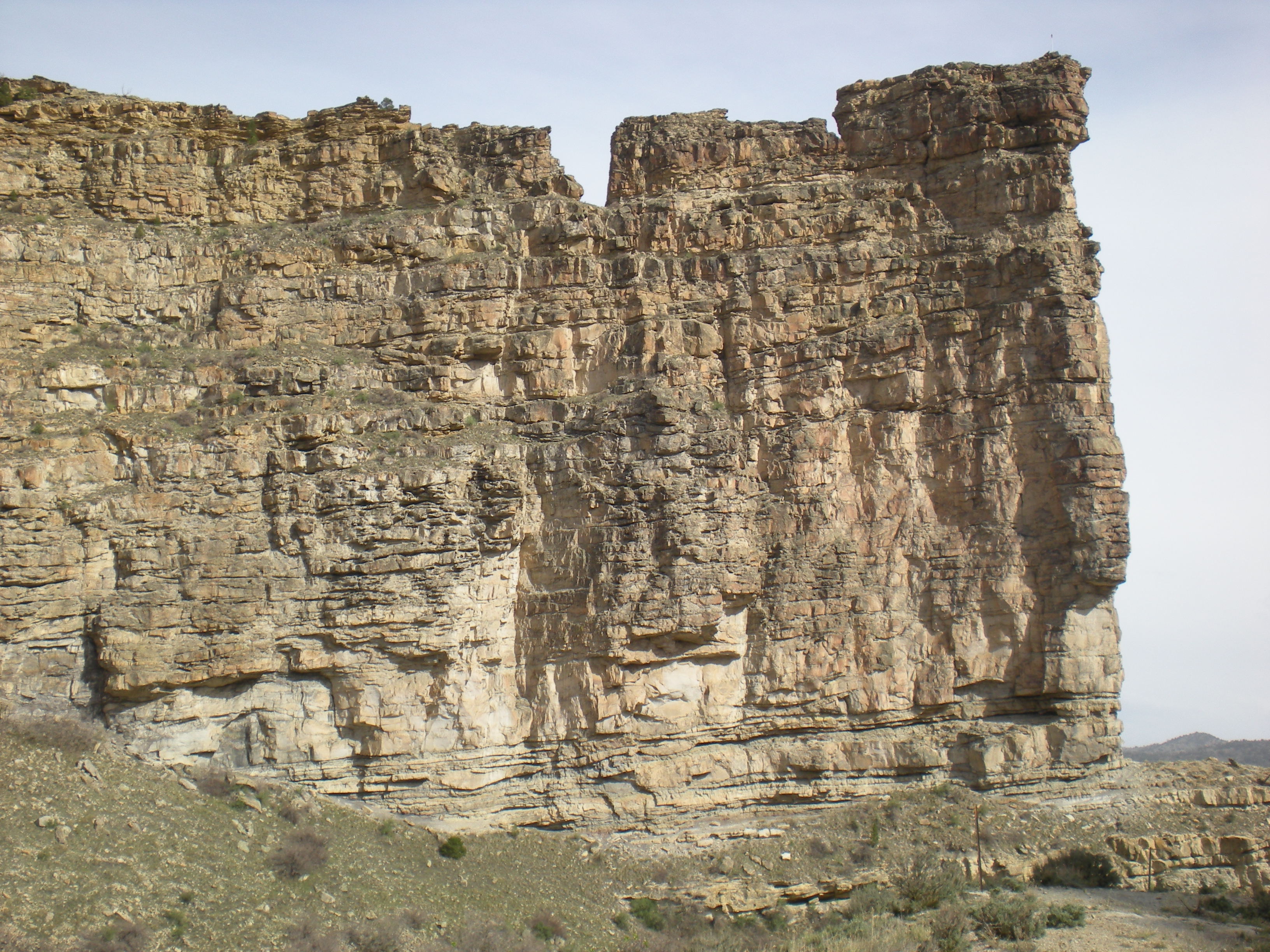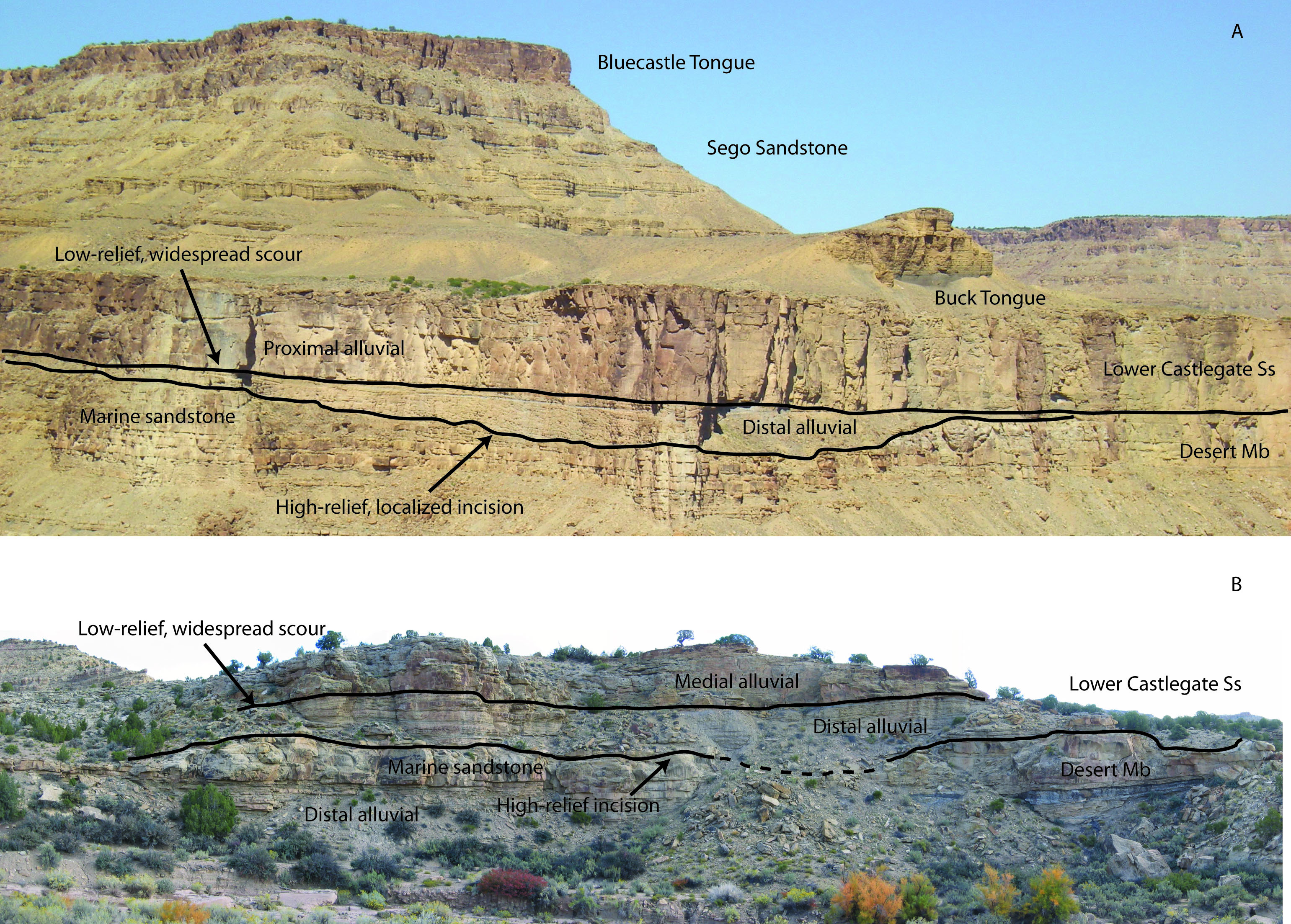|
DYNAMIC STRATIGRAPHY WORKGROUP |
|
Summary of work: This study incorporates recent advances from experimental stratigraphy, paleohydraulic theory, and studies of modern rivers to build on the work of Robinson and Slingerland (1998) by exploring how alluvial aggradation, selective deposition, and the presence of a backwater reach (sensu Parker et al., 2008) affected sediment transport in Lower Castlegate rivers and, consequently, downbasin stratigraphic change of Lower Castlegate Sandstone. In a more general sense, this study delves into the sedimentologic and stratigraphic consequences of sustained and extensive alluvial aggradation.
The Campanian Lower Castlegate Sandstone of the Book Cliffs, Utah, presents an excellent example of the downstream changes in fluvial stratigraphy resulting from sustained and extensive alluvial aggradation. Spatial distributions of paleo-flow depths, grain-size distributions, and outcrop observations of facies and channel-stacking patterns were integrated in this study to estimate river paleohydraulics, and the long profiles of the paleo-rivers were reconstructed using paleo-slope estimates. Systematic downstream fining of the Lower Castlegate Sandstone is accompanied by proximal to distal transition from a predominantly mixed-load braided-river system west of Floy Wash to a suspended-load single-thread or distributive system in the eastern Book Cliffs. Flow conditions, bedload availability, and selective deposition seem to have been influenced by backwater hydraulics in the distal reaches of the Lower Castlegate rivers. This study presents the first recognition of the effects of backwater conditions within ancient fluvial stratigraphy. Interpretation of backwater hydraulic conditions in Lower Castlegate paleo-rivers is supported by comparison with the modern Mississippi River when the systems are appropriately non-dimensionalized. These observations and interpretations were documented and organized as a general depositional model for highly aggradational rivers.
Outstanding stratigraphic problems of the Lower Castlegate Sandstone were addressed based on an underlying assumption that Lower Castlegate paleo-rivers were primarily aggradational rather than incisional, and that downstream changes in fluvial style were the primary controls over stratigraphic development. The basal surface of the Lower Castlegate Sandstone, which has been previously presented as a type example of a sequence boundary in outcrop, is instead interpreted as a scour-based facies transition rather than as the base of an incised-valley system. The unusual distal pinchout of the Lower Castlegate Sandstone was likely due to near complete loss of bedload material in the paleo-rivers due to marked upstream aggradation rather than loss of water discharge.
Publications and presentations: Publications:
Conference/meeting presentations: Petter, A.L., Steel, R.J., Mohrig, D., Muto, T., Olariu, C., and Robinson, R.J., 2010, Reinterpretation of the Lower Castlegate Sst (Book Cliffs, Utah) based on autostratigraphic ideas of spatial sedimentation patterns: From Depositional Systems to Sedimentary Successions on the Norwegian Continental Shelf, Norwegian Petroleum Society (NPF) Conference, Stavanger, Norway. Petter, A.L., Steel, R., and Mohrig, D., 2008, Similarity in fluvial-channel dimensions between Blackhawk Fm (Grassy Member) and Lower Castlegate Ss, Eastern Book Cliffs, Utah: GSA Annual Meeting, Houston, Texas. |
|
People: Andrew Petter, Ron Steel, David Mohrig
Research question(s): Extensive aggradation of river systems causes sediment to be removed from transport, effectively making it unavailable to downstream reaches of the rivers. What are the effects on morphologies, avulsion behaviors, and fluvial style of rivers? How does this affect the facies, geometries, architectures, and preservation of resulting fluvial strata? How do backwater hydraulic conditions in the distal reaches of river systems affect stratal development? |
|
Examples of the vertical stratal succession generated by basinward migration of alluvial facies belts at (A) Green River and (B) Thompson Canyon. |
|
Type section of the Castlegate Sandstone near Helper, Utah. |
|
The stratigraphic consequences of long-term river aggradation: paleohydraulics, downstream sediment fractionation and changes in fluvial style in the Campanian Lower Castlegate Sandstone of Utah |

